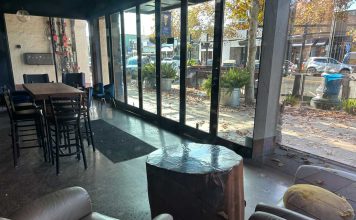A recent report concluded that the majority of Gilroy residents
qualify for below-market homes, but the vast majority of units for
sale are out of their reach. State and county officials have been
pushing the city for years to ratchet up its affordable housing
efforts, and now a developer is also nipping at the city’s heels
even though officials say the statistics do not reflect
reality.
A recent report concluded that the majority of Gilroy residents qualify for below-market homes, but the vast majority of units for sale are out of their reach. State and county officials have been pushing the city for years to ratchet up its affordable housing efforts, and now a developer is also nipping at the city’s heels even though officials say the statistics do not reflect reality.
Darin Smith, principal of Economic & Planning Systems, told the city council March 3 that more than half of the city’s population cannot afford 77 percent of the homes for sale, and individuals earning less than $37,150 have no new market-rate options for renting apartments. “Affordable housing” is reserved for those earning up to 120 percent of the county’s median income, or $88,600 for an individual and $126,600 for a family of four.
“The market is not providing affordable for-sale housing,” Smith said.
But council members argued that the Association of Bay Area Governments – which tells cities how many affordable units to build – bases its recommendations on the county’s median income, not Gilroy’s, which hovers around $62,000 for an individual, according to census data.
Due to Gilroy’s self-imposed growth limit and the lack of a redevelopment agency here to help finance affordable housing, the city’s current housing plan from 2002 did not reach ABAG’s much-higher affordable housing goals. The California Department of Housing and Community Development also disapproved Gilroy’s plan, effectively barring it from the state’s $2.8 billion affordable housing pot.
“Satisfying the HCD would save (Gilroy) money, but the HCD has to act reasonably, too,” said Assistant City Attorney Andy Faber. “Some of these (ABAG) targets are very difficult to meet because they are inconsistent with a city’s own plans.”
Between 1999 and 2005, Gilroy doled out 2,701 housing permits, 435 of which were for affordable housing. That equals 16 percent, but ABAG recommended 78 percent. Before that, Gilroy’s housing plan from the ’90s fell victim to two lawsuits brought by nine different poverty law groups alleging Gilroy’s housing policy neglected county numbers, Faber said. He won both, though, “so Gilroy’s housing element was ordained essentially.”
But Bill Cusack, co-owner of CW Design and Development in Pacific Grove, disagreed.
Cusack cannot afford to buy pricey residential land and then build below-market housing, he said, even though Gilroy still has 32 of its 464 affordable units left to give out and all 100 of its affordable units reserved for seniors, according to city documents. All told, the council has doled out more than 4,300 housing units for the 2004-2013 time period, the vast majority for market-rate homes.
“Finding land is the big challenge,” Cusack said. “Very few sites are feasible for us to do that kind of project.”
Cusack also disagreed with Faber’s assessment that a city is not required to facilitate affordable housing – it just can’t preempt it: “We are going to find out whether that’s correct or not,” Cusack said, adding that state legislation has “evolved toward making affordable housing a primary planning priority.”
Next week Cusack will meet with planning officials – whom he described as helpful and willing amid difficult real estate conditions – about a swath of commercial land east of U.S. 101, which he hopes to develop, he said. He likened the potential move to SCH buying agricultural land for its Rancho del Sol project in northern Gilroy and then building houses on it after the council barely approved re-zoning it two years ago.
But the city’s long-term General Plan designated land east of the freeway as commercial and industrial, so putting housing there is tricky. Cusack’s plans create an uncomfortable situation for the city because he is an affordable builder who cannot find a place to build even though the city – which is well below ABAG goals – has affordable permits left. City officials did not return messages Thursday seeking comment, but Faber explained why Gilroy seems like an easy target.
“If the state doesn’t certify your housing element, then you become a target even though, legally, the fact that they didn’t certify doesn’t have any legal significance,” he said.
Smith agreed and also floated the idea of imposing impact fees on new businesses to subsidize cheaper housing, but the council immediately vetoed the idea.
“I can’t envision – with the economy the way it is – voting for imposing another impact fee on job creation in this city,” said Councilman Perry Woodward.
But Councilman Peter Arellano said businesses create low-income jobs when there’s no commensurate housing: “Where are the people going to live?”
“It’s not my problem,” Councilman Bob Dillon retorted.
Either way, ABAG recommends Gilroy achieve a 50 percent rate – which is what cities throughout the county have averaged – by building about 800 affordable units out of a total 1,600 throughout the next seven years. These revised goals are reasonable, said Dennis Lalor, chief executive officer of nonprofit South County Housing.
“In truth, the numbers that Gilroy was allocated from 1999 to 2005 were extremely high, but now one could argue that there’s a certain logic to the 50 percent per year requirement,” Lalor said. “This time around, places like San Jose, Sunnyvale and more urbanized areas received much bigger allocations.”
All this also comes after the city council adopted the Neighborhood District Policy in June 2005, which created five districts of about 275 acres each throughout the city. The policy requires that 15 percent of the homes within each district be affordable.
Lalor sits on the city’s Housing Advisory Committee along with other residents, developers and affordable housing advocates, all of whom are working alongside EMS to draft a new housing ordinance and its financial impacts. And with developers like Cusack on the horizon, the pressure is on.
Gilroy housing statistics
Fifty percent of those living in Gilroy cannot afford more than 3/4 of the homes for sale here
Sixteen percent of housing permits doled out by Gilroy between 1999 and 2005 were ‘affordable’















